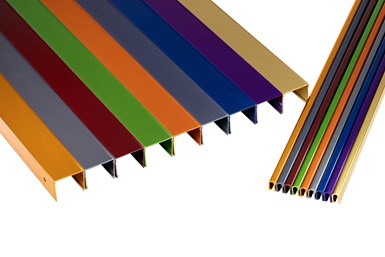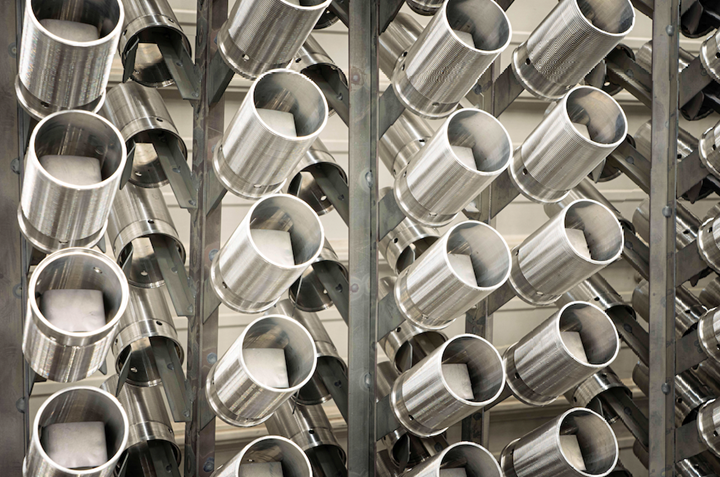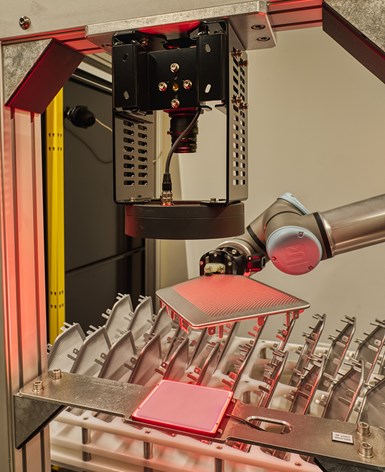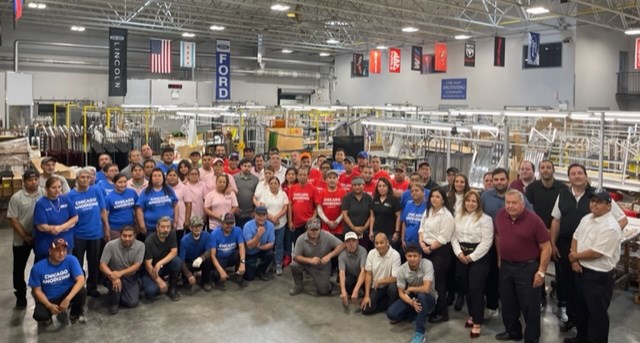
Chicago Anodizing Company has run as a family-owned business based in Chicago’s west side for more than 75 years.
Photo Credit: All images courtesy of Chicago Anodizing Company
Chicago Anodizing Company (CAC) first opened in Chicago’s Westside in 1947. The company is a third-generation family-owned business. John Serritella, president of CAC, has been with the company for 40 years. Today, Serritella continues to run it as a family-owned business with his sons John Jr. and Chris as the VP of sales and the production manager, respectively. The company injects that family approach into everything it does, putting people first when it comes to relationships with both its employees and its customers.
“We truly value the customer relationship,” says Serritella, referencing the company’s motto: “Building Partnerships One Finish at a Time.”
Featured Content
CAC provides finishes for a variety of industries including automotive, aerospace, medical, electronics, construction and infrastructure. Within each market, the company puts an emphasis on how best to help its partners serve their customers, using knowledge of different industries to tailor certain value added services for specific programs. At its core, CAC is an anodizer, but the company strives to offer pre and post services to differentiate itself from its competition. These services include mechanical finishing prior to anodizing, laser marking after anodizing, assembly, and inventory management.
Serritella offers this example: “A large segment of our businesses is related to the tool storage industry where our partners’ products need to be finished to very specific customer requirements, such as bright finishes, custom color matching or satin finishes. We then ship direct to our customers’ customer. We take on that level of responsibility to ensure our customers’ products meet 100% quality requirements and meets 100% on time delivery. We meet every customer specification that’s required of us. Whether it’s for the anodizing, or taking care of all the assembly, packaging, inventory control, electronic barcoding of all products. Our team at CAC wants our customers to trust us as their partner as a one stop shop for all their finishing requirements. From start to finish we want to handle all of it for our customers.”
A host of capabilities

CAC supplies Type II finishes to a wide variety of industries and processes a vast array of parts including precision screw machined components, machined CNC components, fabricated metal parts, metal stampings and more.
CAC’s 70,000 square foot facility boasts two full-service anodizing lines, a full-service bright dip line, more than 25 in-house custom colors, hand polish and buffing machines, as well as laser marking robotic cells.
The company specializes in the following:
- Type II Aluminum Anodizing (Sulfuric), Class 1 and Class 2 (dyed) anodizing
- Type III, Class 1 and Class 2 (dyed) Anodizing, also known as Hardcoat Anodizing — a process known for its abrasion and wear resistance
- Aluminum Chromate Conversion Coatings
- Barrel anodizing and bulk anodizing services
- Bright dip anodizing

CAC is one of the few anodizers in the country that offers bright dip prior to anodizing. This chemical pretreatment enhances the sheen of the metal and gives it a polished appearance.
Serritella says that it’s becoming increasingly difficult to find a good finishing partner for some of these processes due to increasing pressure from environmental regulations. “Bright dip anodizing is becoming a more and more difficult process,” he says. “Environmentally, a lot of operations can’t do it. When we bought the business five and a half years ago, we made a 1.5-million-dollar investment in all new fume scrubbers, ventilation makeup, air systems, rectifiers and refrigeration equipment that has really set us up for the next 15–20 years of growth for our business.”
CAC is certified for the following specifications: MIL-A-8625 for its Type II and III anodizing, MIL-DTL-5541 for its conversion coatings, and AAMA 600 and AAMA 611 for its architectural work.

Type III, also known as hardcoat anodizing, utilizes sulfuric acid with low temperatures and high voltage to create an extremely hard, durable surface finish.

Chromate conversion coatings are used on aluminum alloys and castings for corrosion resistance and improved paint adhesion.
Going the extra mile
In addition to its anodizing processes, CAC offers several other services including color matching and development, blasting, polishing and buffing, brushing, laser marking and masking. The company offers finishes in more than 25 in-house colors, and also can supply custom color matching and development.
“If it’s not a standard off the shelf color, we will blend the colors specific to their need and be able to match that from part one to part 10 million,” Serritella says.

CAC employs state-of-the-art laser technology for marking finished components.
Laser marking is one area where the company has implemented automation solutions. CAC boasts three robotics cells comprising five Zetalase XL machines, which offer a variety of highly configurable applications for processing large components as well as large fixtures of parts. CAC uses this MOPA (master oscillator power amplifier) fiber laser technology to offer marking capabilities on anodized aluminum, as well as carbide, painted or coated materials, most plastics, and all additional metals.
Serritella says CAC is happy to invest in new equipment for new programs that have a higher volume demand.
“When we took on the programs for the speaker grills that we run in volumes, we felt it necessary to use robotics not only to address the repetition of the work, but also to achieve the required quality. Every laser mark is done within 1,000th of an inch for every grill component that is run. We have camera systems on those robotic cells to ensure that those part markings are 100% to the customers’ specifications.”

CAC takes pride in the loyalty and dedication of its employees and works to put people first in its strategy for growth.
Putting people first
CAC prides itself on the dedication of its staff. The company has around 85 employees with an average of around 22 years of service per employee. Serritella says that even during the COVID pandemic, the company was able to maintain its staffing levels.
“They have been unbelievable with their work through the COVID situation,” he says. “Understanding what we went through as a business, and they were with us 100%.”
CAC takes that loyalty to heart and the company keeps its employees’ best interests in mind whenever it considers its growth opportunities. The addition of automation, for example, is not aimed at replacing people but rather at helping to elevate their position or the nature of their work within the company.
“Bringing in robotics helped us to not only acquire the type of work that we wanted to get into and to be better at it, but it also freed up funds to give our people better raises — to give them the things that they need so they can support their families. We take care of our employees,” Serritella says. “When you bring in robotics, it can help alleviate some of those tasks that are a little bit monotonous. And it allows us to keep reinvesting in our people in our teams.”
That idea of investing in people is something that CAC truly strives for. The company is also exploring community outreach programs to area high schools, community colleges and universities with the hope of educating a new generation about the career potential the finishing industry has to offer. The company has found longtime employees by investing in students for summer help and looks to do more with internships and educational opportunities.
“We want to continue to invest in the future by bringing in more people and educating them — getting them into a better spot and allowing them to make more money. That’s our goal,” Serritella says.
RELATED CONTENT
-
Understanding and Managing White Spots on Anodized Aluminum
Having trouble with spotting defects when anodizing? Taj Patel of Techevon LLC offers a helpful overview of the various causes of white spots and potential solutions.
-
NASF/AESF Foundation Research Project #122: Electrochemical Approaches to Treatment of PFAS in Plating Wastewater - 10th Quarterly Report
The NASF-AESF Foundation Research Board selected a project addressing the problem of PFAS and related chemicals in plating wastewater streams. This report covers the 10th quarter of work (April-June 2023). Here, we examine the effect of surface fluorination of Ti4O7 anodes on PFAS degradation performance in terms of energy performance as well as formation of chlorate and perchlorate when chloride is present in the solution. The full paper on this work can be accessed and printed at short.pfonline.com/NASF24Feb2.
-
Techniques to Enhance UV Stability of Dye Anodized Coatings
The ultraviolet stability of anodic coatings is assessed based on lightfastness/colorfastness testing.




















